Aussie Broadband activates super fast 10Gbps private fibre network
Aussie Broadband has opening its own private fibre network for business in Melbourne.

Hello and welcome to The Download, The Australian’s technology blog for the latest tech news.
Chris Griffith 3.30pm: Aussie Broadband activates its own super fast fibre network
It’s interesting when a retailer says “Damn it, we’ll roll out our own fibre!” and thereby declares some independence from the National Broadband Network. Gippsland, Victoria based Aussie Broadband is a retailer of broadband plans on the NBN, but it’s also going solo.
Today it connected its first customer on its very own “dark fibre” network which comprises a 20km loop around the Melbourne CBD and Port Melbourne.
“Today is a huge milestone for Aussie Broadband,” says company general manager sales, Aaron O’Keeffe about the stage one fibre rollout. “We’re very excited to announce that a large part of our Melbourne central roll out is now complete and available to businesses right now.
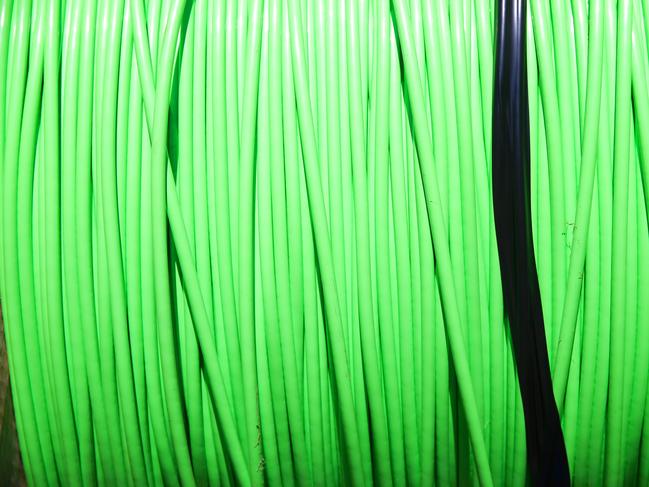
“We’re also delighted to offer customer speeds up to ten gigabit per second (10 Gbps) – not many telcos are currently providing this.”
Andrew Raphael, marketing manager of Ai English, the inaugural company on the new network, says the firm is delighted.
On its website, Ai English says it delivers English lessons to 60 clients across China. Mr Raphael says there is an option to be “scalable”. “We’ve signed up for the 2 Gbps plan, but we have the potential to go to 10 Gbps if we want to.”
Mr O’Keeffe says Aussie Broadband plans to build fully diverse routes to over 75 NBN points of interconnect and 24 key data centres across Australia.
Asked why the company was building its own fibre, a spokesperson said: “Primarily, the rollout of our own dark fibre network will help reduce our reliance on third-party infrastructure and ultimately deliver long-term cost savings.
“Our own fibre in the ground also means that we can control quality and improve our customer experience even more, and start to drive down our backhaul costs. An added bonus is that we can connect businesses directly to our fibre.”
Aussie Broadband says its $67 million fibre project began in May 2020 and is expected to be completed by 2022.
12.00pm: Democrats target big tech to protect news outlets
Some Senate Democrats are seeking to enable regulators to protect local news outlets, accusing tech giants such as Google and Facebook of “unfair business practices,” according to a new report by members of a key committee that will hear from the top industry executives this week.
Released on the eve of the Senate Commerce Committee’s hearing on Wednesday with the chief executives of Alphabet’s Google, Facebook and Twitter, the report argues that local journalism is in a crisis — badly exacerbated by the coronavirus pandemic — partly because of alleged anti-competitive behaviour on the part of the tech platforms that ought to be policed by the Federal Trade Commission.
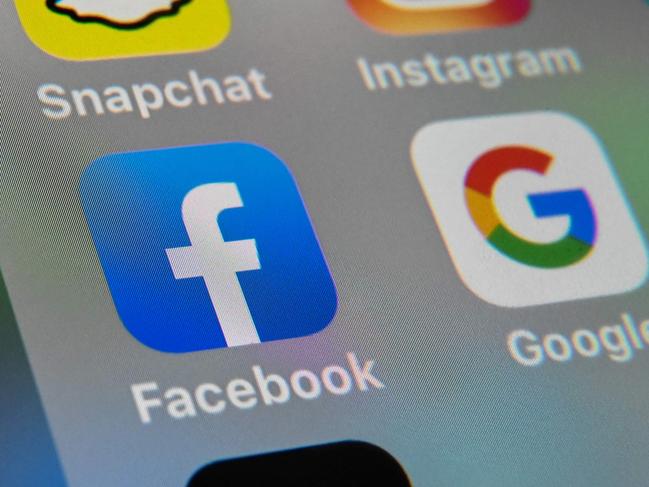
“They are facing unfair practices,” Senator Maria Cantwell (D., Wash.), the ranking member on the committee, said in an interview. “We think Congress and the FTC should address those unfair practices.”
A Google spokeswoman said the report “distorts the reality around Google’s role in the online news ecosystem and the value that we provide to publishers who face challenges in transitioning to the digital world.” Facebook took issue with the report’s allegation that tech giants take local news content and data for their own sites, a practice known as scraping. “The accusation that we scrape news articles is simply not true,” a Facebook spokesman said.
The report also proposed a range of other legislative changes, including a law that would force tech platforms to negotiate with local news outlets to ensure those organisations are paid for their content, in much the same way that local TV broadcasters are paid by cable and satellite companies for distributing their content.
Painting a grim portrait of the state of the local US news industry, the report noted that it had lost 70 per cent of its revenue in the past two decades, while today Google and Facebook control 77 per cent of local digital ad revenue.
The report argued that the FTC needs new authority now so it can force Google and Facebook to change their practices, given that the Justice Department’s current antitrust lawsuit against Google could take years to be resolved.
Democrats don’t currently control committee business in the Republican-controlled Senate. Criticism of the tech platforms has been bipartisan lately, though Republicans tend to be more focused on fears that the platforms are silencing conservatives.
Senate Republicans have been critical of the tech platforms’ influence over the publishing landscape. During a Senate hearing last month, Republican senators including Mike Lee (R., Utah) and Josh Hawley (R., Mo.) asked tough questions of a Google executive about the search giant’s dominant market power in the ecosystem of tools that connect web publishers and advertisers. “This looks like monopoly upon monopoly,” Mr. Hawley said.
Dow Jones
Chris Griffith 9.40am: Harley Davidson launches its first eBike
Having produced its first electric motorcycle LiveWire, iconic motorcycle company Harley-Davidson has now launched its first eBike Serial 1. Pricing and pre-orders are expected to begin next month, judging by a counter on the Serial 1 website for November 16, and the eBike is slated to come to market next year.
The new eBike is steeped in Harley-Davidson history. Serial 1 Cycles is the name of the Harley subsidiary developing the bike. Its name comes from “Serial Number One”, the first Harley motorcycle released in 1903. Even the looks of the eBike (foreground) is taken from that early motorbike (background) – see photo above.
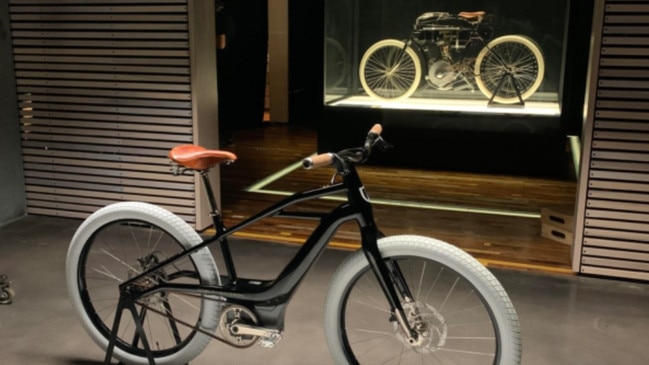
“When Harley-Davidson’s founders put power to two wheels and created their first motorcycle in 1903, they changed the way the world moved forever,” the website says. “Now, more than a century later, Serial 1 Cycles, powered by Harley-Davidson, has created an eBicycle that’s designed to change the way the world moves again.
“Serial 1 Cycles offers premium eBicycles guided by intelligent, human-centred design and crafted using the most advanced bicycle technology available, to create the easiest and most intuitive way to experience the fun, freedom and instant adventure of riding a pedal-assist electric bicycle.”
From the photos, the new eBike has a mid-drive motor, a belt driven rather than chain connection to the back wheel, an internal battery (we can’t see one on the outside) and internally wired connections to lights.
9.20am: Facebook says election foreign influence claims could be exaggerated
Facebook says foreign actors are attempting to exaggerate their ability to influence the US election in a way that itself could affect the vote. However, it says it has taken down a small network of fake accounts and pages tied to the Iranian government.
Tuesday’s announcement about the Iranian network is the latest of several in which Facebook said it removed pages and accounts that were limited in scope and had made little headway in their efforts to sow disinformation. The company said it removed 12 Facebook accounts, six pages and 11 Instagram accounts tied to the Iranian government that were focused on the US and Israel. The network had only 820 followers total, and many of the accounts involved were dormant.
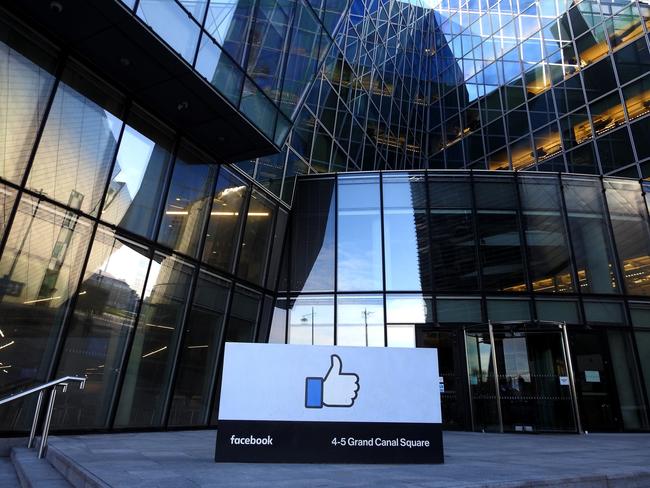
At the same time, Facebook officials said they were increasingly on the alert for foreign actors attempting to hype their own impact on the US election in an attempt to “weaponize uncertainty to sow distrust and division” about the vote — a strategy the company called “perception hacking”.
“Overstating the importance of these campaigns plays into the hands of malicious actors, whether foreign or domestic, and we should not take the bait,” said Nathaniel Gleicher, Facebook’s head of cybersecurity policy, in a conference call with reporters.
Mr. Gleicher said that there are no guarantees that more significant foreign manipulation efforts were not escaping Facebook’s detection, but the apparent shift away from large-scale automated networks of accounts suggests that the people behind such efforts are having less success.
Facebook also has announced the removal of another minor network focused on US political issues, this one originating with individuals in Mexico. Facebook noted that it had amplified some content previously linked to Russia’s Internet Research Agency, but said it had no proof that the effort was connected.
More concerning, Mr. Gleicher said, were attempts by foreign actors to take credit for mass-scale election interference. Mr Gleicher said he was particularly concerned that such propagandists would seek to portray high levels of legitimate voting in certain areas as evidence of manipulation.
Earlier this year, the U.S. intelligence community said in a public bulletin that Iran was interfering in the election to undermine confidence in U.S. democratic institutions and harm President Trump. Russia was engaged in a multi-pronged effort to denigrate Democratic nominee Joe Biden, the alert said, while China, though less active, also wanted to see Mr. Trump fail in his re-election bid.
Intelligence officials have generally viewed Russia as the most serious foreign threat to the 2020 presidential election, based on its widespread disinformation activity on social media in 2016 and a number of warning signs that hackers have been targeting campaigns and American political groups in recent months.
But some security officials have said in recent weeks that Moscow, by some measures, has been relatively quiet compared with four years ago, and that Iran has stepped up its interference ambitions instead.
The Wall Street Journal
9.10am: AMD to buy Xilinx for $US35bn ($49bn)
Advanced Micro Devices (AMD) plans to buy rival chip maker Xilinx in a $US35 billion deal, adding momentum to the consolidation of the semiconductor industry that has only accelerated during the pandemic.
AMD and Xilinx said the companies reached an all-stock deal that would significantly expand their product range and markets and deliver a financial boost immediately on closing. The Wall Street Journal previously reported the two were close to an agreement.
The US semiconductor industry is going through a seismic transformation, driven both by a wave of corporate transactions and a pandemic that has supercharged demand for some chips.
AMD’s planned purchase of Xilinx, which still must pass regulator scrutiny in the US and abroad, would be one of the biggest among chip makers and would mark only the latest landmark proposed transaction in recent months. It comes just weeks after graphics chip-making giant Nvidia agreed to pay $US40bn for Arm Holdings, the British mobile-phone chip design giant backed by SoftBank Group, in what would be the industry’s biggest ever deal if it goes through.
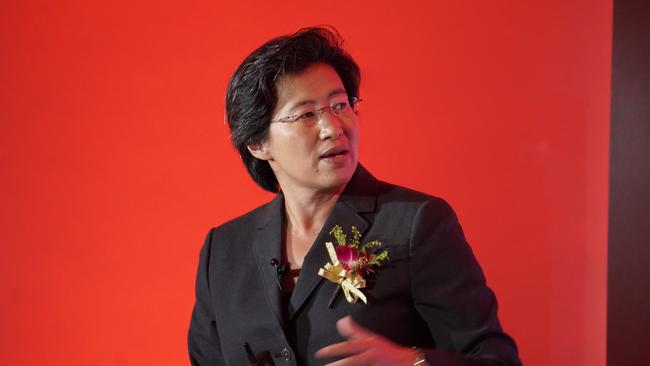
That proposed tie-up landed after Analog Devices in July agreed to pay more than $20bn for Maxim Integrated Products.
Santa Clara, California-based AMD specialises in central-processing units and graphics chips at the heart of modern computers. Its shares have advanced strongly this year as the pandemic fuelled the sale of laptops, as well as gaming systems such as Microsoft’s Xbox and Sony’s PlayStation that use AMD chips.
The company has also benefited from a business selling processors for data centres that has taken off with the introduction of new generations of high-performance chips in recent years under chief executive Lisa Su, making it a more formidable competitor to larger rival Intel.
AMD is enjoying a surge at a time when Intel has been struggling. Both companies have benefited from the spike in demand for laptops and cloud computing as people increasingly work from home.
Intel, however, has been stung by problems with its manufacturing process that analysts believe could help competitors like AMD advance. AMD shed its chip-making facilities more than a decade ago and now relies on others to make its products, such as Taiwan Semiconductor Manufacturing, which runs some of the world’s leading chip plants.
This year’s almost 80 per cent increase in AMD’s share price gave it the financial firepower to scale up in a move similar to Nvidia, which plans to use about $US21.5 billion in stock to pay for Arm.
Xilinx shares rose more than 8 per cent in early Tuesday trading. AMD fell more than 4 per cent.
With the chip industry consolidating and customer needs changing, Ms. Su said size is necessary to keep pace.
“We built a very strong business around the foundation for AMD, but when you look at where the markets are going in the future, I think scale matters,” she told the Journal, adding that the companies’ cultures, technology strategies and business models meshed well.
The Wall Street Journal



To join the conversation, please log in. Don't have an account? Register
Join the conversation, you are commenting as Logout